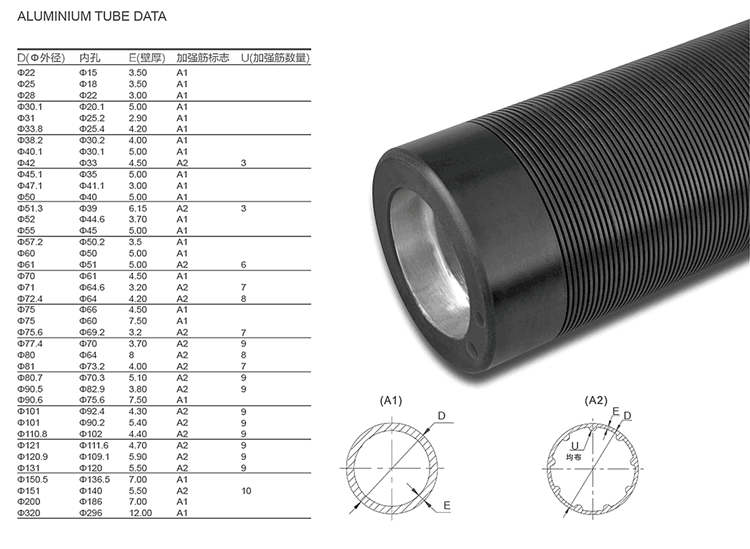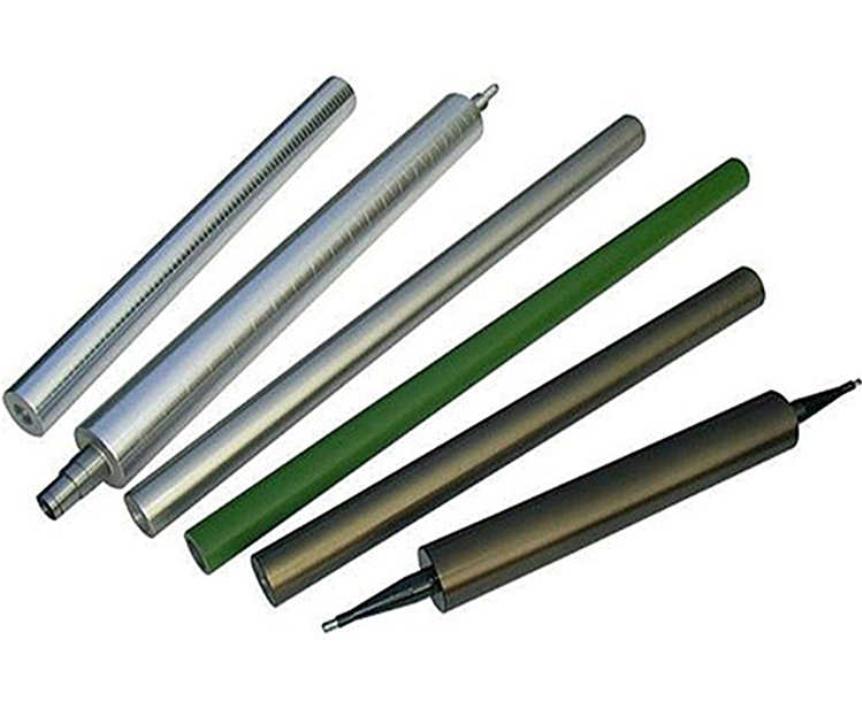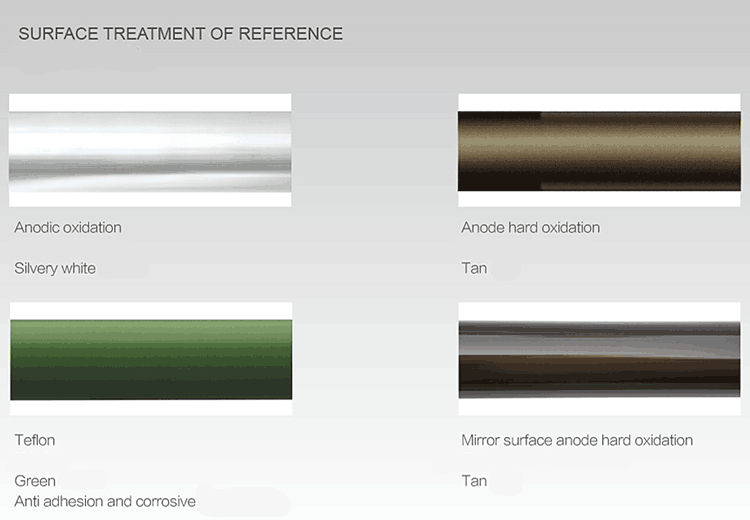Introduction of aluminum guide rollers
Aluminum guide rollers have the advantages of high unit strength, light weight, small inertia, bright and rust free surface, and are widely used in production lines such as embossed printing, coating, winding, blowing, laminating, coating, slitting, papermaking, and textile.
The aluminum alloy guide rollers produced by our company undergo a strict raw material extrusion production process. The high-strength special section and reinforcement ribs can greatly improve the rigidity of the aluminum tube. The excellent hot sleeve assembly process and CNC lathe surface precision turning can achieve high bonding strength and accuracy, good linearity and concentricity. The precise high-speed dynamic balance system can ensure both static balance and high-speed dynamic balance performance (up to ISO1940 G1 level), ensuring that the aluminum rollers do not vibrate during high-speed operation on the machine. Different surface treatment methods can provide different usage needs. The aluminum rollers produced by our company can greatly improve the performance of your machine.
The structure of aluminum guide rollers can be roughly divided into:
(1) Hollow aluminum roller: an internal bearing type structure, with bearings assembled in the bearing holes on both ends.
(2) Connected aluminum roller: The two ends of the roller body are combined with steel or stainless steel shaft ends, forming an integrated structure.
(3) Water passing aluminum roller: Cooling or heating liquid enters and exits through both sides and circulates inside the roller body.
(4) Special roller: Various special structural rollers processed according to the drawing.
Different surface processing methods for aluminum guide rollers:
(1) Smooth surface: With a smooth and low resistance surface, it can achieve different surface roughness Ra0.3~Ra6.3 according to requirements
(2) Surface thread line: Commonly used include cross thread line and center unfolding line (dividing from the center and extending towards the two end faces).
(3) Concave and convex surfaces: Various concave, convex, and arc-shaped surfaces can be machined by CNC lathes.
(4) Sandblasting or shot peening: Sandblasting or shot peening can obtain a rougher surface and increase friction.
(5) Knurling or Ethernet cable: Different sizes of patterned surfaces can be provided according to customer requirements.
Different surface treatments or coatings for aluminum guide rollers:
(1) Universal white oxidized surface: With a moderate surface hardness of HV300, it is cost-effective and can also provide different colored surfaces (such as pure black) according to customer requirements, suitable for the low tension film industry.
(2) Brown hard oxidized surface: with a high surface hardness of HV700 and an oxide film thickness of 0.1mm or more, the oxidation technology introduced from Taiwan has high hardness and wear resistance, which can be applied to various high tension and thicker materials, greatly improving the service life of aluminum rollers.
(3) Teflon surface: The special Teflon coating makes it easy to clean and provides moderate anti adhesion.
(4) Rubber surface: With aluminum rollers as the core axis, different coating layers can provide versatility with different characteristics and hardness.
(5) Industrial hard chrome surface: High surface hardness and corrosion resistance, with a surface roughness as low as Ra0.01 (ultra mirror). Compared to traditional chrome plated steel rollers and lightweight chrome plated aluminum rollers, it is suitable for higher speed machines.
Deila
-
Lithium Battery Welding Machine | High-Precision, Fast, SafeFréttirNov.17,2025
-
Aluminium Guide Roller | Anodized, Lightweight, Low-NoiseFréttirNov.17,2025
-
Tofu Cat Litter Bulk – Eco, Low-Dust, Fast Clumping SupplyFréttirNov.17,2025
-
Equipment for Lithium Cell Assembly | Automated & PreciseFréttirNov.10,2025
-
Square File Tool – Precision Cut, Hardened Steel, VersatileFréttirNov.10,2025
-
Lithium Ion Battery Assembly Machine | Automated, High-SpeedFréttirNov.10,2025










